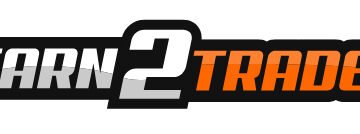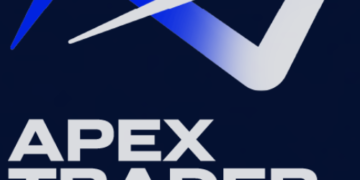What Is Auction Market Theory and How to Use It in Futures Day Trading | Prop Trading Evaluation Discounts
Learn how Auction Market Theory explains price movement in futures trading. Discover how elite traders use it daily and claim an 80% lifetime discount on Apex Trader Funding evaluations.
📖 Understanding Auction Market Theory (AMT)
Auction Market Theory (AMT) is the foundation of modern market structure analysis. It views every financial market — including futures markets — as a continuous two-way auction between buyers and sellers searching for a fair price.
Instead of seeing charts as random price bars, Auction Market Theory helps traders understand why price moves, not just how.
It explains that every tick, candle, and price swing reflects the balance and imbalance between demand and supply — a battle to discover value.
⚙️ The Core Principles of the Auction Process
Markets behave like ongoing auctions:
- Buyers bid higher to own contracts.
- Sellers offer lower to attract buyers.
- The result is a constant negotiation until both sides agree on a fair value — the equilibrium price.
When buyers overpower sellers, price rises.
When sellers dominate, price falls.
And when both sides agree, price consolidates — forming what’s known as a balance area.
This auction behavior repeats endlessly — balance → imbalance → new balance — and that’s where futures day traders find their best opportunities.
📊 The Building Blocks of Auction Market Theory
| Concept | Description | Trading Insight |
|---|---|---|
| Value Area | The price range where ~70% of trading occurred | Defines the market’s perception of fair value |
| Point of Control (POC) | Price level with the highest traded volume or time | Acts like a price magnet |
| Balance Area | Market rotates between highs and lows | Indicates acceptance and equilibrium |
| Imbalance / Trend | Market breaks away from balance | Suggests initiative buying/selling |
| Acceptance & Rejection | How price reacts at value edges | Reveals strong buyers or sellers defending levels |
Understanding these concepts allows traders to see where large participants view price as cheap or expensive, which is crucial for timing entries and exits.
📈 How Auction Market Theory Applies to Futures Day Trading
In futures day trading, success depends on reading the auction.
Let’s take an example using Nasdaq (NQ) futures:
- Yesterday’s Value Area: 18,450–18,520
- POC: 18,495
- Today’s opening price: 18,560 (above value)
This setup shows that the market opened outside of value — a potential sign of imbalance.
If buyers hold price above 18,520, they are accepting higher value — a bullish continuation signal.
If price drops back inside yesterday’s value, it’s rejection — sellers took control.
That real-time shift between acceptance and rejection gives traders early clues about potential breakouts or rotations back to value.
🧠 Why Auction Market Theory Matters to Prop Traders
Top-performing futures prop firm traders use Auction Market Theory every day.
It allows them to trade with market structure, not emotions.
Here’s what professional traders gain from it:
- Clear view of value areas where big money operates
- Understanding of market balance and imbalance phases
- Precision in identifying high-probability trade zones
- Confidence to avoid low-quality trades in the middle of balance
- The ability to trade the auction, not the noise
This theory transforms a trader from guessing into strategic participation — the mindset of an elite prop trader.
💡 AMT vs. Traditional Technical Analysis
| Auction Market Theory | Traditional Technical Analysis |
|---|---|
| Focuses on price discovery and market behavior | Focuses on chart patterns and indicators |
| Explains why price moves | Shows what price did |
| Identifies value shifts | Identifies historical patterns |
| Helps anticipate balance-to-imbalance transitions | Often lags behind actual order flow |
For futures day traders, AMT provides a real-time understanding of the market’s intent — not just reactive signals.
🏁 How to Apply Auction Market Theory in Your Futures Day Trading
Here’s a step-by-step guide:
- Start with the previous day’s Value Area and POC.
These act as reference points for fair value. - Mark balance areas — zones where price rotated repeatedly.
The next directional move often begins at balance edges. - Watch for imbalance.
When price breaks out of balance and volume confirms, momentum traders enter. - Confirm acceptance.
A breakout that holds above (or below) value shows the market accepting a new price level. - Enter at value edges.
Wait for price to test a high or low of balance and show acceptance or rejection. - Use volume profile or market profile charts to visualize participation.
By following the auction process, futures traders can position themselves with the winning side of the market instead of chasing moves.
💼 Combining AMT With Prop Firm Trading
Many prop trading firms evaluate traders based on their ability to manage risk and trade with structure — exactly what Auction Market Theory helps develop.
If you’re planning to join a futures prop firm evaluation, mastering AMT can give you the professional mindset to:
- Trade with discipline and consistency
- Avoid emotional trades and FOMO
- Understand value migration and volume nodes
- Pass your evaluations confidently
And the best part — you can get started at a massive discount.
🔥 Exclusive Deal for Futures Prop Traders
📢 80% OFF Apex Trader Funding Evaluations – Pass in 1 Day!
🚀 Apex Trader Funding, one of the best prop trading firms for beginners, is offering a LIFETIME 80% DISCOUNT on all evaluations — perfect for traders applying Auction Market Theory in futures day trading.
💰 80% OFF ALL Evaluations & Future Months
💰 Pass in just 1 day!
💰 $50 resets for ALL Evaluations
💰 $140 one-time PA activation fee
💰 Take unlimited evaluations – up to 20 funded accounts!
🔥 Apex has already paid out over $581 MILLION to traders!
🔹 Use Code: PROPDEALS at checkout
🔹 Or Click Here: https://tinyurl.com/ApexPropDeals
👉 Save Now and start your journey toward becoming a professional futures prop trader.
🧩 Final Thoughts: The Auction Is the Market
Auction Market Theory teaches that the market is never random — it’s a logical, structured negotiation of value between buyers and sellers.
For futures day traders, it provides a clear edge:
- You see where fair value lies
- You recognize when price moves to unfair value
- You act based on participation, not emotion
Understanding this framework and applying it within prop firm evaluations can transform your trading from reactive to professional.
Start studying the auction, learn to think like the market — and trade like an elite prop trader.
✅ Call-to-Action: Start Trading Like a Pro
Ready to apply Auction Market Theory in real futures markets?
Get funded fast and trade with confidence at Apex Trader Funding.
👉 Get Your 80% Lifetime Discount Here
👉 Use Code: PROPDEALS at checkout
👉 Start your evaluation today — pass in 1 day!






No Comments
Leave Comment